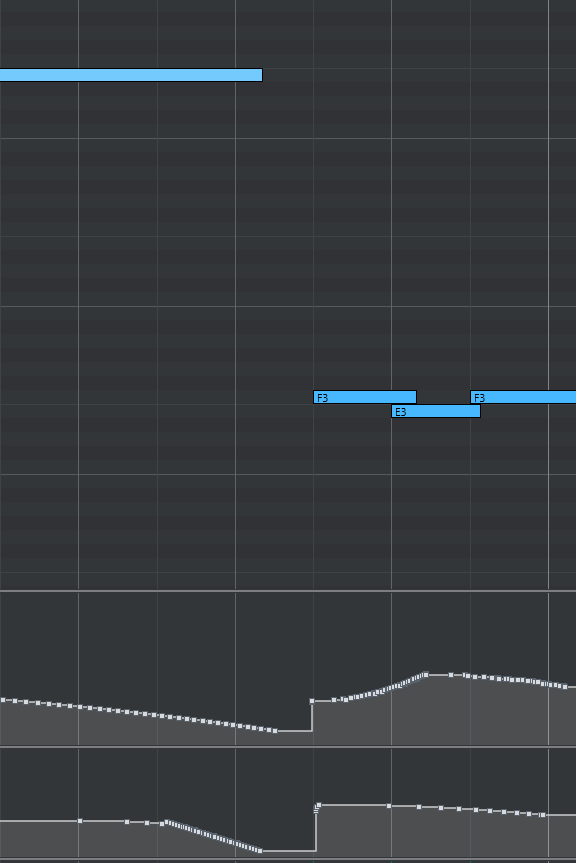I run into this issue occasionally when working on tracks using Synchron. I end a note that I am fading and start another one a moment later with the the volume turned back up but when I turn the volume up I still hear the tail end of the previous note....? Why would that other note still be playing when it has ended? And is there a way to fix this using the same track? The image below shows example so you can see volume and xfade curves. When the lower note comes back in I hear tail end of upper note. Any insight would be greatly appreciated.
-
Tail of previous note heard when turning volume back up.
-
Hi Kregg,
We are always recording the full length of the reverb tail, so if you are automating Expression and the Release Sample is still ringing, you will hear that release sound. The only way to get around this is indeed 2 MIDI Tracks.
Paul Kopf Head of Product Marketing, Social Media and Support -
Hi Kregg
Working with samples is often very time-consuming if perfection is desired...
So there are a few things you need to know about the end of notes.
It is important to know, for example, that various articulations (e.g. sustain or legato etc.) start a so-called "release sample" when the keyboard key is released - i.e. at the end of the note. This normally means that you always get a natural decay, regardless of when you end a sustain note.So this is probably the case for you. You fade out your articulation with CC11, for example, and stop it just before you start the new note. To make this new note sound normally loud again, you raise CC11 again, which of course raises the "release sample" of the previous note that is still playing... Voilà, your "mistake".
In your case, you can do the following: either end the previous note earlier so that the release sample has already faded away as well, or shorten the release time with CC23 (default) so that it no longer disturbs. If you only want to shorten the release time for one note, you just have to automate CC23... or use the solution above from Paul.More about Release- and other Tones in the end or between Samples:
In connection with release samples, there are other "phenomena" that sound like bugs at first... but of course they are not.
There are a few articulations that are not looped, i.e. have a natural end of their own. Take, for example, the articulation détachée in the strings or portato in the winds. They may last about 0.8s in full length. But you can also use them for only 0.4s, in which case the corresponding release sample is added after 0.4s. This is of course great because you can define how long you want the détachée to be. If you now play Détachée for 2 seconds and then release the key, the release sample will be played after 2 seconds, even though the articulation itself has long since faded out...
Another similar mistake can happen when you switch from a single articulation to a legato articulation. Let's say you play staccatos and always keep the note length on the midi side fairly close to the next note.
The last staccato is for example a G, now you switch to legato and the note C. Although legato only begins with C, the connecting transmission sample from G to C is already being played (triggered). This sounds quite unnatural, especially if the G staccato note has already faded away. The rule here is, that the preceding note may not be closer than 50ms to the starting legato note, otherwise the "legato connecting note" will be triggered. If it is actually necessary to play as close as possible to the changing legato articulation (closer than 50ms), you can do this by stopping the note earlier but extending it with CC64 (pedal hold).I wish you a lot of success
Beat
- Tips & Tricks while using Samples of VSL.. see at: https://www.beat-kaufmann.com/vitutorials/ - Tutorial "Mixing an Orchestra": https://www.beat-kaufmann.com/mixing-an-orchestra/
